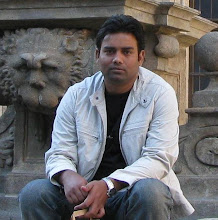Mukhalinga
Mukhalinga is one of the varieties of lingas where one or more faces are carved on it. It might have one, two , three, four or five faces corresponding to the five aspects of Shiva. These five aspects are Vamadeva, Tatpurusha, Aghora, Sadyojata and Ishana. We have examples of one, four and five face lingas from ancient shrines, however two and three face lingas are very rare. Agamas and Tantra literature have details regarding making of mukhalinga. A basic fact from these literature is that faces should be carved on the Rudrabhaga (membrum virile, the vertical part of linga which is worshipped). These also states that if the central shrine has only one entrance in its front or east side then there should be only one face carved on the linga. Similarly if there are two entrances, front and back, then two faces should be carved and so on. If the shrine has four entrances then the linga may have either four faces or five, the fifth one should be on top of the lings facing east. The top face represents the Ishana aspect of Shiva, eastern face Tatpurusha, southern face Aghora, western face Sadyojata and Vamadeva by northern face.
 Chaturmukha-linga at Nachna - This gorgeous and magnificent linga is installed in a 9th century temple, now known as Chaturmukha Mahadeva temple. The temple is still in use, though it is under maintenance by ASI (Arcaeological Survey of India). There are four faces carved on this linga, though there is only one entrance to the main shrine. It might be that the main shrine comples was later on modified and originally the linga might be in open or in a complex with four entrances on four side. But there is no evidence to support this, however. The face on the south side is with open mouth, representing Aghora aspect of Shiva. All the faces on this linga are carved with care and style, mostly confirming to the literature of Agmas and Tantra. All four faces have distinct hairstyle and ornamentations accordingly.
Chaturmukha-linga at Nachna - This gorgeous and magnificent linga is installed in a 9th century temple, now known as Chaturmukha Mahadeva temple. The temple is still in use, though it is under maintenance by ASI (Arcaeological Survey of India). There are four faces carved on this linga, though there is only one entrance to the main shrine. It might be that the main shrine comples was later on modified and originally the linga might be in open or in a complex with four entrances on four side. But there is no evidence to support this, however. The face on the south side is with open mouth, representing Aghora aspect of Shiva. All the faces on this linga are carved with care and style, mostly confirming to the literature of Agmas and Tantra. All four faces have distinct hairstyle and ornamentations accordingly.The Aghora aspect face is shown here in detail. Colied curly hair, only single hara (necklace) of beads shows that theis aspect is about the renunciation of the worldly charms. His facial expressions are very distinct of Aghora sect where they act like a mad person and always are in hallucination under the effect of liquor and in angry temper. Eyebrows are carved going up and meeting in the center, aggravating the angry expression of Aghora.
Ekmukhi-linga at Udayagiri - This single faced Shivalinga is one of the rare artifact of Indian art. A face is carved on the lingam, with graceful and charming countenance. His hair are bound as a ball on upper side, and shown wearing a necklace. The hair is tied up into a topknot with long locks cascading down each side. The arrangement of the hair recalls the story of how Siva broke the fall of the River Ganga as the waters came down from heaven. There is a water channel in the plinth and in the floor of the chamber leading to a hole that pierces in the cave wall. This linga is inside a cave, facing east. As per Agmas literature, this face should reflect the Tatpurusha aspect of Shiva. However there could be instances where the sculptor deviated from the texts and sculpted his vision and idea. This linga is dated to Gupta dynasty, 4th-5th century.
Chaturmukhi-linga at Khajuraho - This linga is inside the Brahma Temple at Khajuraho. The temple is mistakenly referred as Brahma Temple due to four faces carved on this linga. However this is purely a Shiva lingam with four faces at four cardinal directions. This lings is little different from what we saw at Nachna, as here we see that faces are not fully carved on Rudrabhaga, but they are carved in a manner to support the linga in between. Entrance to the temple is usually kept closed so I did not have details of all faces. From carftmanship point of view, it looks inferior to the Nachna model and also the characteristics of the faces are not very prominent. Ear-rings are similar to the Nachna, but hair styles are different.
Bibliography:
1. Elements of Hindu Iconography, Vol II, Part I - T A Gopinatha Rao, Motilal Banarasidas Publishers Delhi, India, ISBN - 81-208-0878-9



